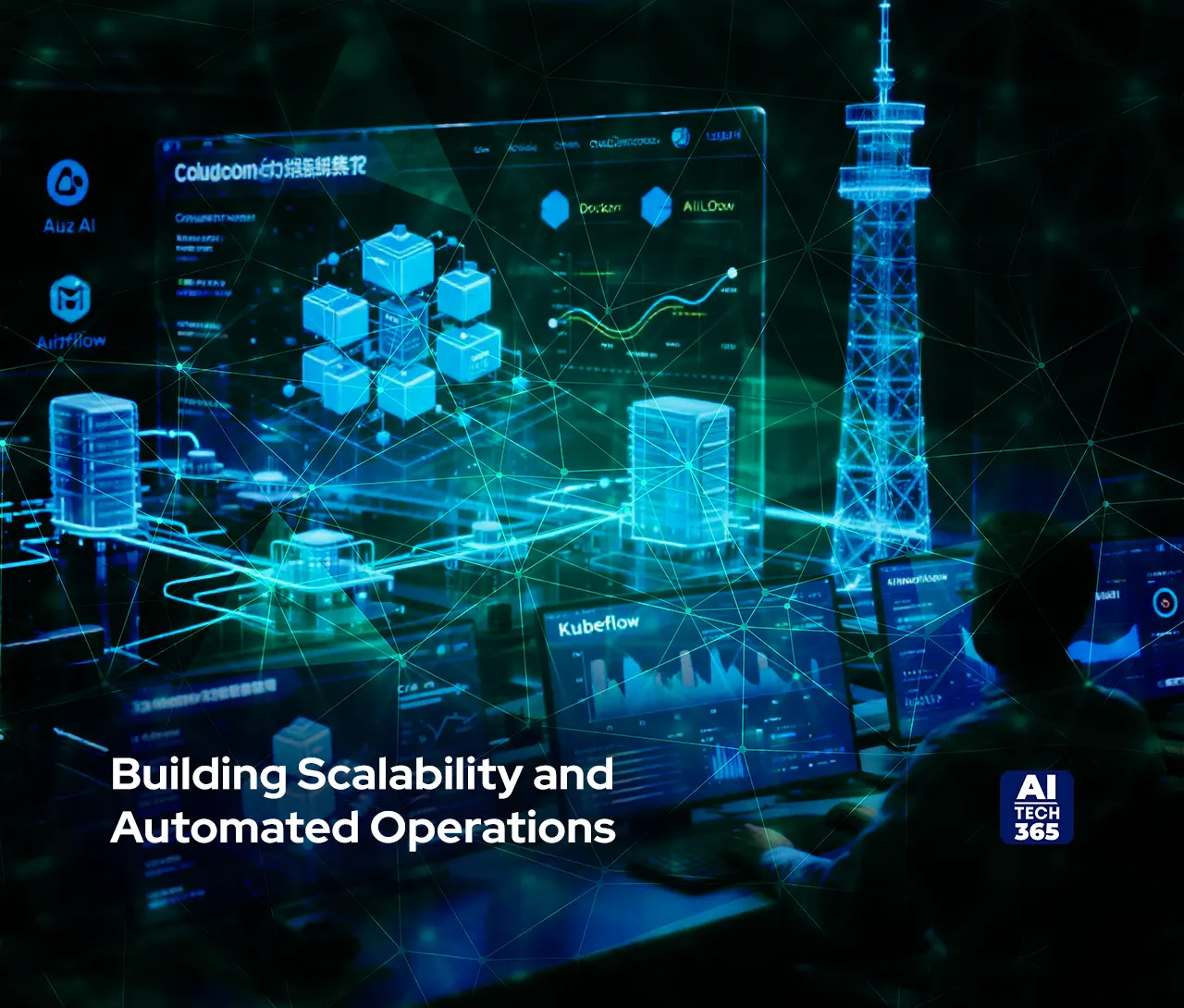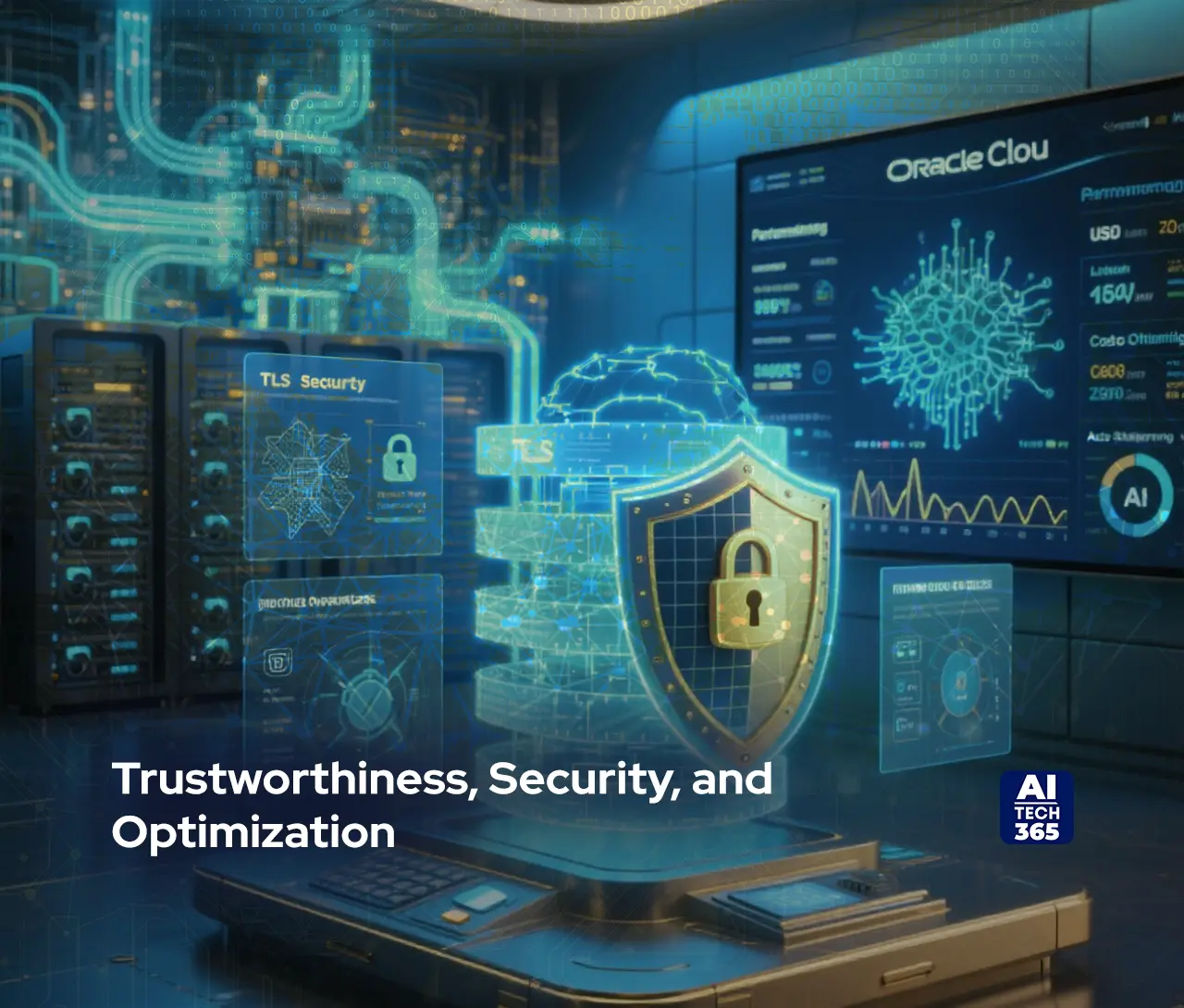AI is not just a side project anymore. Companies are trying to make it work across their whole business. Small experiments are not enough. The real challenge is building systems that can handle lots of work, scale up fast, and stay reliable.
Cloud AI infrastructure makes this possible. It puts together compute, storage, networks, and MLOps tools so data and models can move smoothly. Teams can train models, push updates, and keep things running without constantly fixing problems.
The push is serious. Surveys show many organizations are changing how they work and even hiring senior people to manage AI properly. They know AI is more than just software. It comes with responsibility. Done right, cloud AI infrastructure lets AI run faster, stay safe, and actually deliver value across the business.
The Building Blocks of High-Performance AI
A. The Compute Layer: Hardware Specialization
Getting AI to perform well starts with picking the right hardware. CPUs handle regular computing tasks, but they often struggle when models become large or complex. That’s where specialized accelerators make a difference. GPUs, for instance, are versatile and strong enough to run multiple machine learning tasks at once. They work well for both training models and delivering real-time predictions, keeping operations smooth even under heavy workloads.
For projects that need even more scale, TPUs, like Google Cloud’s TPU pods, are built specifically for large neural networks. They run efficiently and don’t waste energy, which makes training large models much faster. According to the 2025 State of AI Infrastructure Report, over 500 technology leaders said that scaling AI without blowing up costs is still a major headache. By using GPUs and TPUs together the right way, companies can build cloud AI infrastructure that’s quick, reliable, and ready to handle whatever comes next.
B. The Data and Storage Backbone
AI only works if the data makes sense. You can collect a lot of stuff, but it’s useless if it’s messy. Data lakes, like Amazon S3, Google Cloud Storage, or Azure Blob, are where companies dump all the raw stuff. Logs, pictures, sensor readings, whatever you have. You just throw it in and deal with it later.
That’s not enough though. Feature stores clean it up, organize it, and make it usable for training models or running predictions live. The model sees the same kind of data it saw when it was trained. That keeps the results steady and avoids surprises.
Moving all that data around is tricky too. You need fast networks so terabytes of info get from one machine to another without slowing everything down. AWS’s AI setup shows that when storage, feature stores, and networking work together, AI runs better, faster, and cheaper. The right setup makes cloud AI infrastructure handle big workloads without falling apart.
Also Read: From Data Storage to Intelligence: The Evolution of AI in Cloud Computing
Building Scalability and Automated Operations
A. Infrastructure as Code (IaC) and Orchestration
Scaling AI isn’t just about throwing in more machines. You need a system that can roll out updates and handle traffic without breaking. Docker helps with that. You can pack your environment so it’s the same everywhere. No ‘it works on my laptop’ nonsense.
After that, tools like Kubernetes or cloud ML services step in. They make sure models are deployed right, balance the load, and add more GPU power if demand spikes. If too many users hit your model at once, horizontal scaling kicks in and takes care of it automatically.
Azure AI makes this easier. GPU virtual machines, fast networks, and optimized storage keep AI workloads smooth. Azure AI Foundry brings even more tools. Its updates make building multimodal AI safer and easier for developers.
With IaC and orchestration, teams move fast without chaos. Models keep running, resources aren’t wasted, and AI can handle whatever load comes next.
B. MLOps: Automating the AI Lifecycle
AI isn’t just about building models. You need a system that moves code, data, and models from dev to production without breaking. That’s MLOps. CI/CD pipelines do the work so nothing gets lost and updates happen automatically.
Tools like Airflow or Kubeflow keep the process running. They make sure data is ready, models get trained, and everything gets deployed. A model registry keeps track of versions and metadata. That way, you always know which model is live and what it’s doing.
Edge computing is becoming big. With 5G, most data will be handled near where it’s created. By 2025, about 75 percent of enterprise data will run at the edge. That makes AI faster and more responsive when traffic spikes.
Rules matter too. The EU’s DORA, starting January 2025, sets standards for ICT risk in finance. It makes sure AI systems stay safe and reliable.
MLOps helps teams move fast, keep models accurate, and run AI that can handle whatever comes next.
Trustworthiness, Security, and Optimization
A. Protecting Data and Models
Keeping AI safe isn’t just about locking files. Data has to be safe, sitting in storage or moving around. Encryption like AES-256 or TLS keeps it from being snooped on.
Permissions matter too. People should only see what they actually need. No extras. No shortcuts. It’s like giving someone keys only to the rooms they’re allowed in.
AI itself has new risks. Models can get attacked in tricky ways. Prompt injections, model inversion, or poisoning attacks can make a system behave badly. That’s why teams use guardrails or model armor to filter inputs and outputs. It’s not perfect, but it helps prevent surprises.
Networking also matters. Fast, reliable connections between GPUs make training and inference smoother. Oracle has been improving GPU cluster tech, giving AI workloads the speed they need without wasting money.
Put together, solid encryption, smart access control, model protection, and high-performance networks keep AI systems safe and dependable.
B. Performance Monitoring and Cost Control
AI doesn’t run itself. You have to keep an eye on everything. Look at the machines and look at the models. For the machines, check GPUs, latency, and how fast data moves. For the models, watch if the data changes or if predictions start getting worse.
Costs can get out of hand fast. If you leave machines running when no one’s using them, you pay for nothing. Pick the right type of machine for the job. T4 is fine for inference. H100 works better for big training runs. Turn things off when they aren’t needed. Auto-scaling helps with spikes, so you aren’t paying for extra when traffic is low.
The numbers show why this matters. In Q2 2025, cloud infrastructure spending went up by over $20 billion from last year. The total cloud market is heading past $400 billion this year, mostly because AI is using more power than ever. Watching performance and costs stops surprises and keeps AI running fast.
End Note
Strong AI comes from three things. Pick hardware that can handle the work. CPUs, GPUs, TPUs, whatever you need. Set up systems so models get trained and deployed without problems. Keep everything safe. Watch your data and models all the time.
Cloud AI infrastructure is what separates companies that keep up from the ones that fall behind. You need more than one team. Data people, DevOps, security, everyone together. You do it right, and AI runs faster, smarter, and safer. It gives your business an edge that is hard to beat.



